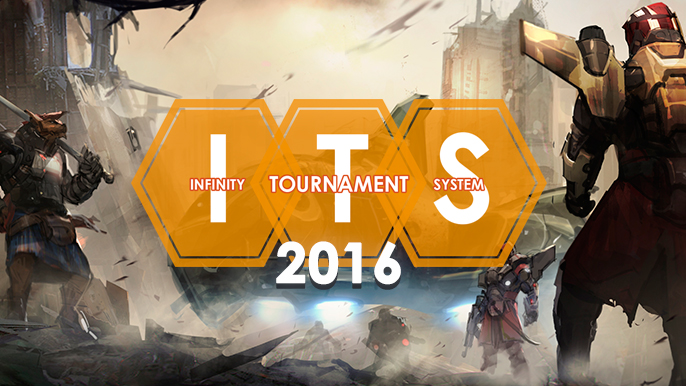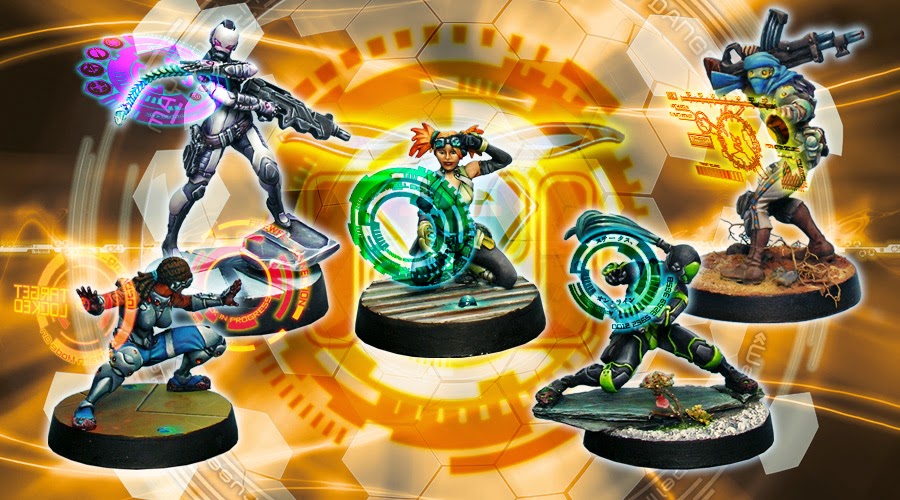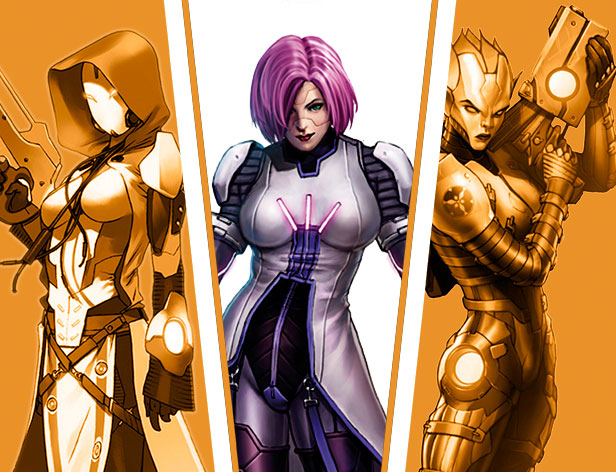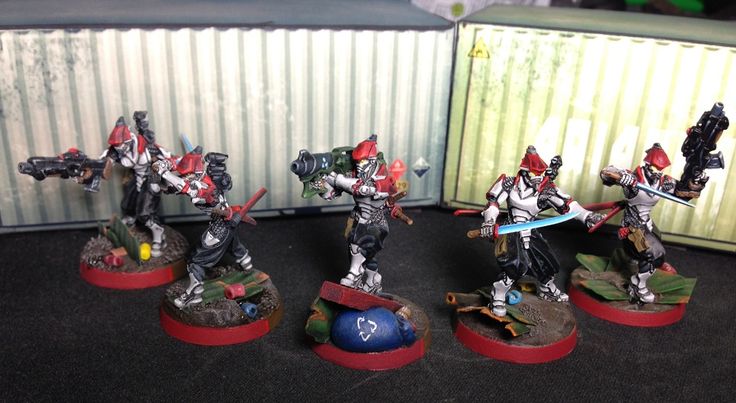Infinity: N3 and the ITS 2016 Meta


Let’s review what makes armies tick in the new N3 missions for 2016!
Human Sphere N3 is giving pretty much all factions of the game improved capabilities and new goodies, so it’s a good time to go over the basics of what makes or breaks a regular game in the latest iteration of Infinity.
Speaking broadly, specialists are still a big part of mission and ITS play, but there are more combat-oriented scenarios now, so we can expect to see a bit less of specialist spam.
Or maybe not, as most actual special troops such as hackers, engineers and Forward Observers can do so much more, and are still being tweaked for better functionality. More and more, they are worth including for what they bring to your team, rather than just interacting with objectives. Let’s have a rundown of some of the thing you can other than firing neo-alloy projectiles toward your enemies at escape velocity.
A Tool for every Task, a Task For every Tool
Hackers, not that long ago, were always a bit of a gamble; if the enemy doesn’t bring hackable stuff, you may be spending SWC and extra point for little visible gain. But the greater variety and availability of ‘buff’ programs allows you to beef up your heavy infantry, turn your combat remotes into accurate, shooty monsters, guide your drop troops in for more daring combat insertions, and even appear as a friendly troop on the enemy HUD for sneaky backstabs. Being able to Mark an enemy from out of LoS is also a big, big trick, and often a key strategy in dealing with enemy heavies that are nigh-unhittable due to ODD or TO camo.
Doctors are my personal favorite, though not all factions can rely on good ones in this regard. But the value of being able to bring a downed model back up cannot be overstated. With orders being always a scarce resource, your opponent cannot always spare an extra one to turn your Unconscious trooper into a Dead one. and if he does, because he knows you brought a doctor, he’s still spending extra resources that he could be using to kill your guys or secure more objectives. In that way, your doc can hamper enemy play even if you never get to make a healing roll. Medikits and ghost-bots let you do your thing while keeping your model (and orders) safe, and now the Medikit even lets you heal from afar by shooting a dart of crazy wake-up meds into a fallen friend from 8 inches away.
Engineers, too, are always good. Remotes and unpiloted TAGs are harder to fully kill, so they are also easier to fix back into the fight (remember that unlike Doctor rolls, failed Engineer fixing rolls do not kill the target for good!). Being able to clear the mines some armies just love to scatter all over the midfield is a big plus as well. D-charges are also a huge deal, especially on fun tables that have destructible scenery (which I always recommend). And while not as sexy as exploding stuff, fixing burned ODDs and glued TAGs can swing games back in your favor after a harsh turn.
Forward Observers are great for stacking bonuses for your troops, and blinding enemy heavies. The tradeoff is that sometimes you will have to expose the model to an ARO in order to mark a key target, so make sure to be in cover and at the worst possible range for your target. It would be nice if this skill ignored enemy Mimetism or ODD/TO modifiers, as you are usually marking them in order to tilt the odds back in your favor, but no such luck. At least it uses WIP, which is reliably higher tan BS for most models.
Chain of Command is the rarest of the specialist traits, and sometimes doesn’t even count. It is often worth its cost many times over, though. Loss of Lieutenant is not the utter tragedy it was in N2, but when you are playing in a fast-paced 3-turn game, spending one of those turns with everyone irregular can be a big hurdle, especially if you already spent all your command token earlier re-rolling Doctor and Engineer attempts, stealing enemy orders going second, or pushing Coordinated Movement models up the board.
Valar Morghulis (or The Ultimate Counter)
So, what was that about specialists no longer being quite so mandatory? Well, they are still a big factor, but with more missions relying on board control, assassinating enemy LTs, sacking weapon caches (where specialists help but anyone can do it), avoiding toxic death zones and so on, you can at least cut back on the number you bring, or focus on quality over quantity.
Of course, just because your enemy is churning out specialists like they’re going out of style, it doesn’t mean you have to try to match him or her model for model. Killing opposing specialists is just as good as bringing your own, as you are removing enemy objective-seekers AND cramping his orders and synergy at the same time. Placing mines and skirmishers near objectives is always a key factor for this, as well as securing sniping lanes and drop positions to let you reach engineers, hackers and doctors before they can do their thing.
Cut to the Chase
Based on experience and event results (and we’re talking about personal opinion here), some common factors emerge to define what makes a powerful list/faction currently, by order of importance.
-Mass Camouflage: Camo is great. There’s no overstating this. It lets you keep enemies (mostly) in the dark about what they are facing. It saves you from AROs for a while. It forces enemies to waste orders revealing your markers, and exposing themselves to YOUR AROs in turn. And it’s geometric in scale; the more you bring, the worse it becomes for them. If you can bring more camo than the enemy has visors/sensors etc (which is very easy for some armies), you have a massive advantage. This is also true regarding lesser, non-token camouflage like mimetism/ODD, though not as powerful. Everything that stacks modifiers in your favor is great, and if you can bring it across the board, more situations will develop in your favor.
-Specialist availability: Let’s qualify here. Everyone can access specialists, obviously. But how many, and across what positions? Are they cheap? Can you get them in several roles (LI, HI, skirmishers that start up the board, drop troops)? Are they good at what they do for their cost? Can you link them to both boost efficiency and bring along an armed escort? Are the concealed under camo tokens so the enemy can’t counter them until it’s too late? Can they take a hit and keep going due to having more wounds, Dogged or NWI in order to achieve an objective before croaking?
-Linked Heavy Infantry: Lots of HI got a big price cut in N3, while actually gaining power instead of being nerfed: higher MOV, more specialists and weapon options. So if before making a HI link was pretty much you sole deathstar and the rest of your list would be cheerleaders and cheap stuff, now you can heave your heavy fireteam AND still bring other threats, like TAGs, expensive skirmishers and such. That’s a lot of threat for your opponent to deal with, and he’ll have t stretch his HMGs, Missile Launchers and such pretty thin to counter you. That, and a +1Burst, +3BS HMG or Spitfire on a model that likely already had great BS is a terror to behold.
-Multiple links: Part of me feels queasy when fireteams become too prevalent, as it feels the game is switching to a platoon-based model like Warhammer and Bolt Action. We’re not there yet, thankfully, but being able to form more than one link, or one link team and on Haris Team, etc are massive boosts to your efficiency. Of course, what you can link is as important as having the link itself, and that also makes a big difference.
No one army or list can cover ALL of those fields, but some get very high marks on 2-3 of them and that’s plenty strong. From what I have seen, Ariadna packs the strongest combination for ITS scenarios, with ALEPH and nomads dueling for second place (as is only proper from a fluff aspect), and then Yu Jing owing to its amazing flexibility and cost-effectiveness.






